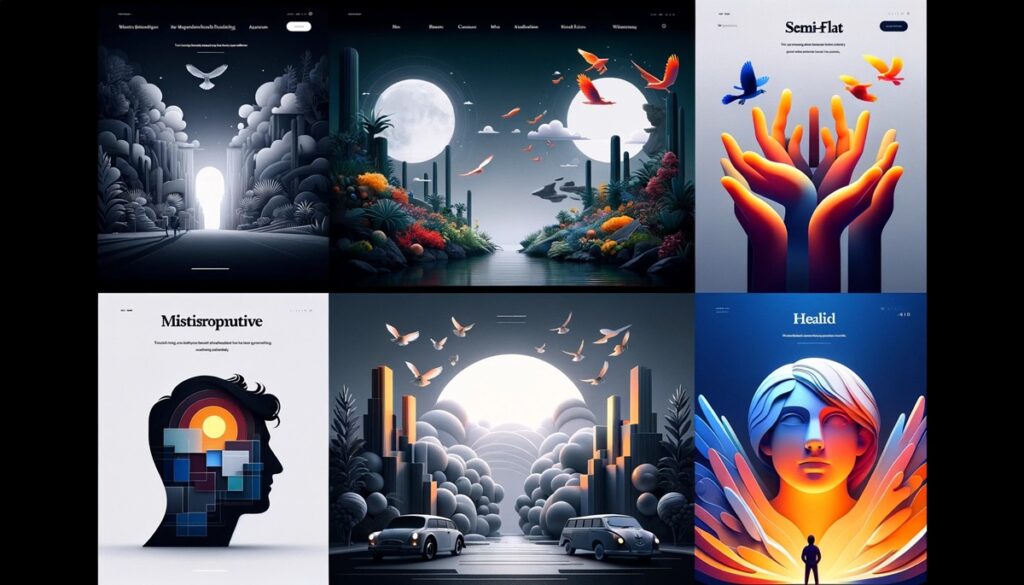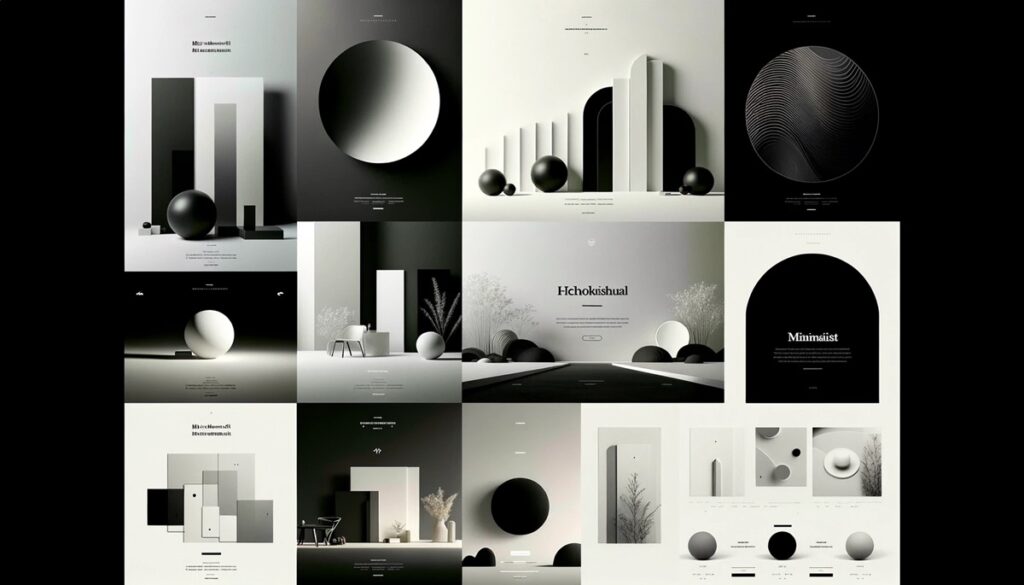Overview of Flat Design
Canada Flat design features simple, two-dimensional elements and bright colors. It stands in contrast to the skeuomorphic style, which mimics real-life properties to create a 3D illusion. Its rise to prominence is marked by major software releases like Windows 8, iOS 7, and Google’s Material Design, which all embrace flat design principles.
Purpose and Benefits
Originally aimed at responsive design, flat design ensures websites scale effectively across different devices. Its simplicity aids in faster loading times and offers a cleaner, more efficient user experience by eliminating visual clutter.
Challenges and Evolution
Despite its advantages, flat design’s lack of depth can hinder usability, making interactive elements less apparent. To counteract this, an evolved version known as “flat design 2.0” incorporates slight skeuomorphic elements, like color variations and shadows, enhancing usability while maintaining a minimalist aesthetic.

Flat design is a style of interface design that rejects the 3D elements of skeuomorphism. It does not, contrary to popular opinion, abandon skeuomorphism in its entirety but instead focuses on rendering objects in flat minimalist form. It avoids the excessive use of gradients, textures, and drop shadows designed to deliver 3D effects for simpler elements focusing on simple flat elements, typography, and flat color schemes.
Flat design is a minimalist approach to UI design. It is intended to reduce complexity in the design and thus enhance the user experience. Not the only approach to UI design and material design, and skeuomorphism (in the form of rich design) are also possible considerations when putting together a UI. It is important to research to discover what it is that your users want and not rely on any standard approach for UI design without getting their input first.
The Impact and Appeal of Flat Design in Modern Digital Landscapes
Flat Design has revolutionized the digital landscape, offering a minimalist approach that places user experience at the forefront. With an emphasis on simplicity and functionality, Flat Design has become a staple in modern web design, offering a sleek and user-friendly approach that appeals to a broad audience.

Understanding the Fundamentals of Flat Design
A minimalist design concept that avoids the use of heavy textures is known as “flat design,” gradients, and drop shadows in favor of simple shapes, clean lines, and bold colors. Its aesthetic is marked by the following features:
Simplicity
Emphasizing Simplicity in Flat Design for Enhanced User Experience
Flat Design, as a fundamental principle, revolves around the concept of simplicity. This design philosophy advocates for the elimination of unnecessary elements, such as bevels, embossing, or other components suggesting three-dimensionality. The primary goal is to present everything in its purest and simplest form, often leveraging basic geometric shapes.
In the pursuit of simplicity, Flat Design places a strong emphasis on clarity and straightforwardness. By removing superfluous embellishments, the design becomes more intuitive and user-friendly. The minimalist approach not only enhances the aesthetic appeal but also contributes to a more efficient and enjoyable user experience.
When implementing Flat Design, consider how each design element aligns with the overarching theme of simplicity. Evaluate whether every component serves a purpose and whether any elements can be further streamlined. This commitment to simplicity extends beyond aesthetics; it’s a philosophy that underlines the user-centric approach of Flat Design.
Bold Color Choices
Elevating User Engagement Through Bold Color Selections in Flat Design
Flat Design distinguishes itself through the use of bold and vibrant colors strategically incorporated to captivate the user’s attention and enhance visual appeal. The careful selection of colors plays a pivotal role in differentiating various elements within the design, contributing to a dynamic and engaging user interface.
In the realm of Flat Design, color serves a dual purpose: it not only adds visual interest but also aids in user navigation. The intentional use of bold colors helps users quickly identify and interact with different sections or functionalities within the interface. This approach ensures a visually stimulating experience while maintaining an intuitive and user-friendly design.
When implementing Flat Design’s bold color choices, consider the psychology of color and how it can impact user emotions and actions. Strive for a harmonious color palette that aligns with the brand identity and enhances the overall user experience. By thoughtfully incorporating bold colors, Flat Design becomes a powerful tool for creating visually striking and user-focused interfaces.
Functionality
Prioritizing User-Centric Functionality in Flat Design
In the realm of Flat Design, functionality reigns supreme. Every design element is purposefully chosen to contribute to a seamless and user-friendly experience. The focus is on creating an interface where every element serves a distinct purpose, ensuring that users can navigate effortlessly and achieve their objectives with minimal friction.
Usability is a key consideration in Flat Design, and this philosophy extends to every aspect of the user interface. Whether it’s the placement of buttons, the organization of content, or the overall navigation structure, each element is carefully crafted to enhance functionality. By prioritizing usability, Flat Design not only improves the user experience but also facilitates user engagement and satisfaction.
When embracing Flat Design for your project, scrutinize every design decision through the lens of functionality. Ask yourself how each element contributes to the overall usability and whether there are opportunities for further optimization. This user-centric approach ensures that Flat Design not only looks appealing but also provides a practical and enjoyable experience for users.
Why Flat Design is Resonating in the Modern Digital Landscape
Flat Design resonates with both users and designers for several reasons:
Improved Load Times
With fewer complex elements, websites and applications designed with Flat Design principles often load faster, enhancing user experience.
Scalability
Flat Design scales well, meaning it looks good on screens of all sizes, from smartphones to large desktop monitors.
Intuitive User Interface
With a focus on functionality, Flat Design helps create intuitive interfaces where users can easily navigate and find information.
Implementing Flat Design in Your Projects
While Flat Design has its advantages, using it effectively requires a keen understanding of its principles. Here are a few guidelines:
Prioritize clarity and readability
With fewer visual cues, ensuring that your design is clear and easy to understand is crucial.
Use color to your advantage
Make sure your color choices enhance the user experience rather than distract or confuse.
Keep it simple, but don’t forget the details
Strive for simplicity, but also pay attention to the finer details that will make your design stand out.
FAQs about Flat Design
Is Flat Design good for all types of websites?
Flat Design can be beneficial for many types of websites, but it’s particularly effective for those prioritizing user experience and simplicity.
Does Flat Design limit creativity?
While it emphasizes simplicity, Flat Design doesn’t limit creativity. Designers can play with color, layout, and typography to create unique and visually engaging designs.
Conclusion
Flat Design represents a shift towards simplicity and functionality in the digital design landscape. It prioritizes user experience and clarity, making it a popular choice for modern web and graphic designers. Despite its minimalist approach, Flat Design offers a world of possibilities for creativity and innovation.
Remember, the key to mastering Flat Design is understanding its principles and knowing how to effectively use them to enhance user experience. Once you grasp this, you’re well on your way to creating stunning, user-friendly designs that will captivate and engage your audience.
Embrace the Simplicity and Elegance of Flat Design with Canadian Web Designs
Ready to bring the power and elegance of Flat Design to your website or digital project? At Canadian Web Designs, we specialize in creating stunning, functional, and user-friendly designs that not only look great but also drive results. Whether you’re looking for a complete website redesign or want to freshen up your existing site, our team of experienced designers is here to help.
Harness the benefits of Flat Design today. Contact Canadian Web Designs to start your design journey, and let us create a digital presence that truly reflects your brand’s vision and values. Don’t just make a statement—make an impact!